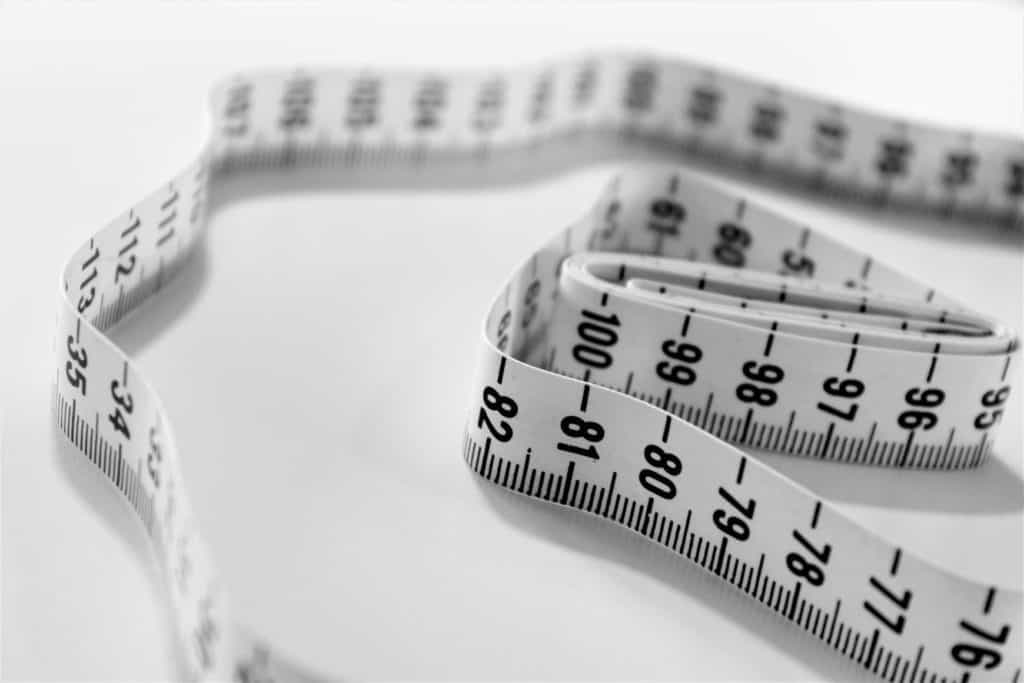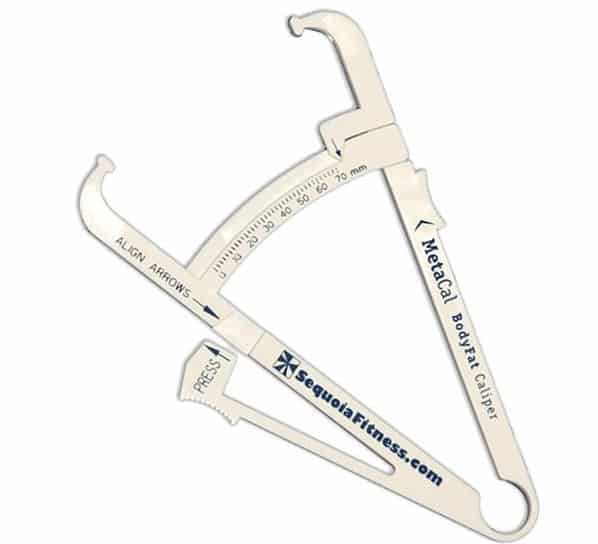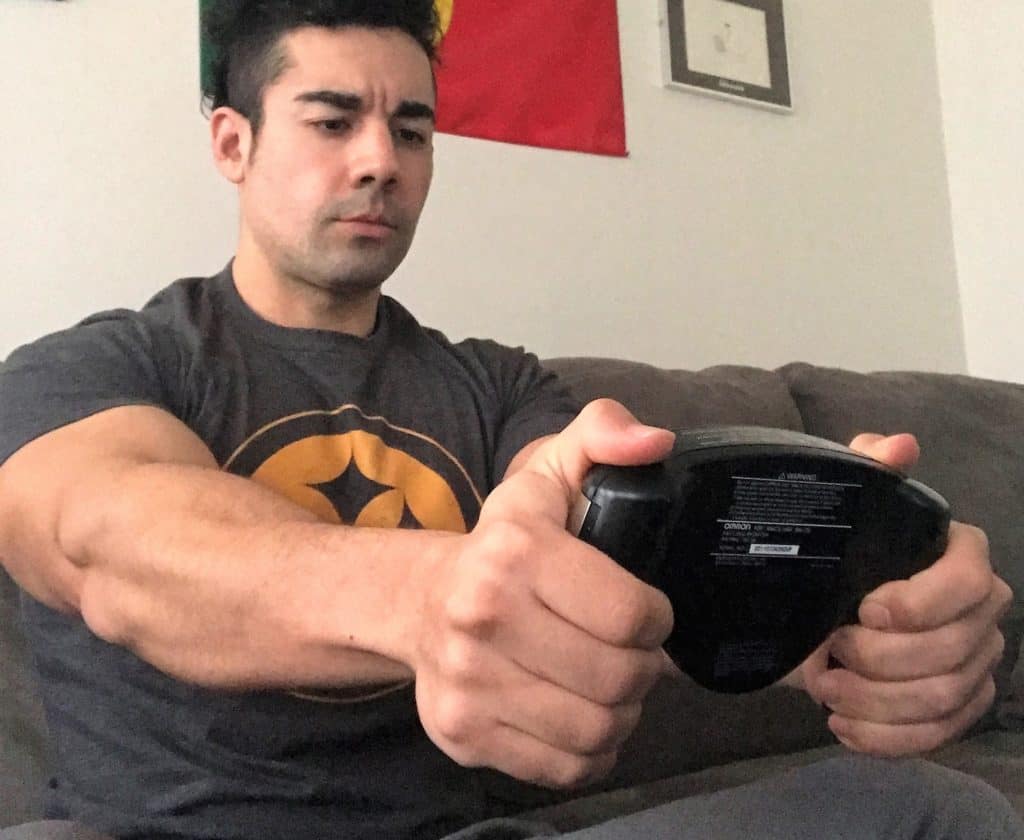
As fitness enthusiasts become more seasoned, they begin to put more credence into body composition rather than body weight on a scale.
Body composition is the proportion of muscle and lean mass relative to fat. An individual with a higher proportion of muscle relative to fat will have a more favorable body composition. In terms relative to fitness, body composition is simply the way your physique looks.
Body weight, typically measured using a scale, is the most common method used to track progress in a fitness program. But body weight doesn’t tell the whole story.
In fact, it’s one of the worst ways to measure true body composition progress. But since everyone has a scale, it’s the most convenient method.
You could find a woman at the store who weighs 150lbs with a high level of body fat and little to no muscle mass that has a body most people would not aspire to. By the same token you could find a 150lb female CrossFit athlete with a body to die for.
Context is important when taking weight into consideration, which is why it’s better to use other means to measure body composition progress.
While there are many sophisticated measurement tools like DEXA scans and hydrostatic weighing, body fat and body composition be measured at home quiet easily and inexpensively.
In some instances it’s useful to have another person help measure you, but in most cases you can use all of these methods by yourself.
When measuring body composition there are a few important things to keep in mind. Some of the tools listed will measure body fat. When using these measurement tools it’s important to track progress relative to the tool itself.
In other words, you don’t want to go out and get a DEXA scan one week and compare it to body fat calipers the next. The readings will be completely different, which can lead to a great deal of frustration. You need to compare DEXA to DEXA, calipers to calipers, etc.
It’s also important to use as many variables as possible when tracking progress. Even though we highlighted the limitations of using a scale, it is still a viable tool. The scale coupled with body fat calipers and measuring tape is a great combination to measure all facets of body composition.
The tools below all measure body composition in their own unique way. They vary in price and accuracy. As mentioned, the best case scenario is to use multiple instruments to measure progress.
Body Measuring Tape
Body measuring tape looks similar to the measuring tape you would use around the house for home improvement projects. The only difference is it isn’t as stiff, which allows you to wrap it around specific muscles. It is considered one of the best and easiest ways to measure body circumference.
The primary benefit of measuring tape is that it allows you to track body composition progress in multiple areas. As mentioned, body composition is a function of both body fat and muscle mass. Measuring tape allows you to track fat loss around your waist while simultaneously tracking muscle gain in the biceps.
The most important consideration when using body measuring tape is to make sure you’re following the same procedure each time. You don’t want to measure one part of your quadriceps one week and a different part the next. Your results will be skewed.
Below are some of the common standards used when measuring specific body parts:
| Body Part | How To Measure |
|---|---|
| Biceps | Wrap around the peak, or highest point, of the biceps. |
| Quadriceps | Measure the circumference of the entire leg, 6 inches above the knee |
| Abdomen | Place one end of the tape on the navel, and wrap around the body |
Body measuring tape is so cheap that it’s almost silly not to use it. They’re made so well nowadays that you don’t even have to fumble around with tape if you’re by yourself. The tape attaches to the apparatus itself to give a more accurate reading.
There are even smart tapes that give a digital reading and track progress in an app.

Body Fat Calipers
Calipers are the most inexpensive way of measuring body fat. A pair of body fat calipers only costs a few bucks, and they’re surprisingly accurate.
The downside of body fat calipers is that they can be difficult to use on yourself. Similar to measuring tape, you want to use the same procedure each time. Typically skin fold measurements are taken a few inches to the right or left of the navel, in line with the hip.
The issue with body fat calipers is that it’s difficult to measure yourself and look at the reading at the same time. This is one instance where it’s helpful to have someone else measure you.
While measuring around the abdomen is the most popular method, you can also use skin fold measurements on the upper back, triceps, thigh, and chest.

Bioelectric Impedance
Scales with bioelectric impedance built in are becoming increasingly popular. In bioelectric impedance, a small electric current travels through the body. The speed in which it travels determines an individual’s body fat percentage, as fat tissue would slow downthe bioelectriccurrent.
Water, on the other hand, would allow the current to travel more quickly. Muscles are predominately water, so the ratio of water to fat is determined by the current. A digital body fat reading is given when the process is finished.
The advancements in bioelectric impedance analysis technology have made it a viable option to measure body fat. On the surface, it may seem crazy that a scale could spit out a body fat percentage in seconds, but they are actually quite accurate.
Due to the effect water has on the reading, it is best used first thing in the morning before you eat or drink anything.
Some specialized scales have bioelectric impedance built in. The current travels through your feet throughout the body to give a reading. Some scales even have an additional handheld device for increased accuracy. Similar to the digital measuring tapes, these scales link to an app to track progress over time.
The omron handheld monitor is a separate device that is not a scale. This is advantageous for fitness professionals who want to track progress with clients since it is portable and more convenient than carrying a scale around.
Body Mass Index
Body mass index (BMI) is the simplest means of calculating body composition. Body mass index is simply a measure of weight relative to height. A chart is used to determine where you fall and whether or not you are categorized as being underweight, normal weight, overweight, or obese.
Obviously, there are major downsides to this calculation since it does not take muscle into consideration. A bodybuilder who steps on stage at 5’6” and 200lbs would be classified as obese. NFL running back Saquon Barkley, who is listed as 6’0” and 234lbs, would also be classified as obese.
Despite the simplicity of this metric, it’s actually not a bad tool for the general population. Individuals who do not lift weights can use it as a baseline measurement. However, if you’re using it in conjunction with a fitness routine it starts to lose merit, as that routine would likely lead to muscle gain.
Summary
Body composition is the most important variable when tracking progress in a long term fitness routine. This is the case whether the goal is fat loss or muscle gain, as simply using body weight on a scale has its limitations.
Body composition is a measure of muscle relative to fat. This proportional measurement makes it applicable to both men and women of all fitness levels, since it is a ratio rather than an absolute value.
A DEXA scan is a machine that is normally used to measure bone density, but is also a great way to measure body fat and muscle mass levels.
However, a typical DEXA scan costs about $150, which is just not practical for anyone looking to track their progress on a weekly or daily basis. In addition, DEXA scans are not ubiquitous due to the price of the machine itself, and can be hard to find.
There are simple, inexpensive methods that can be used at home to track progress. Each has its pros and cons, so it’s important to use a variety of tools to come to a more definitive solution.
Body measuring tape can be used on various muscles to measure the circumference. Obviously, larger readings over time mean you are gaining muscle in your workout program. In conjunction, you could take a waist measurement to see if you’re losing fat in the abdomen area.
Body fat calipers measure body fat in specific areas of the body. It is hard to use calipers on yourself, but a fitness professional can give you an accurate reading.
Bioelectric impedance machines send a small electrical signal through the body and use the speed of the signal to measure body fat. The signal will take longer to travel through fat tissue than it will muscle, which is predominately water.
Finally, body mass index is a simple height to weight ratio measurement with a chart that determines if you are at a healthy weight or not. This measurement is best used in individuals who do not lift weights.
The best course would be to use multiple measurement tools. However, it’s important to only compare one tool against itself. You want to compare this month’s body fat caliper reading to last month’s body fat caliper reading. You don’t want to compare a body fat caliper reading to a bioelectric impedance reading.
As more people become aware of the pitfalls of using just the scale to measure progress, these body composition tools will rise in popularity.
